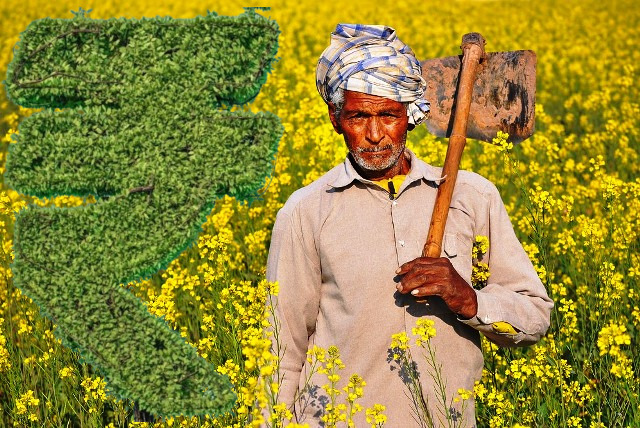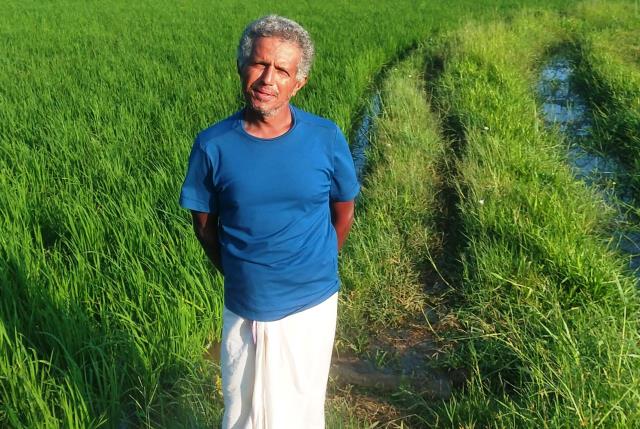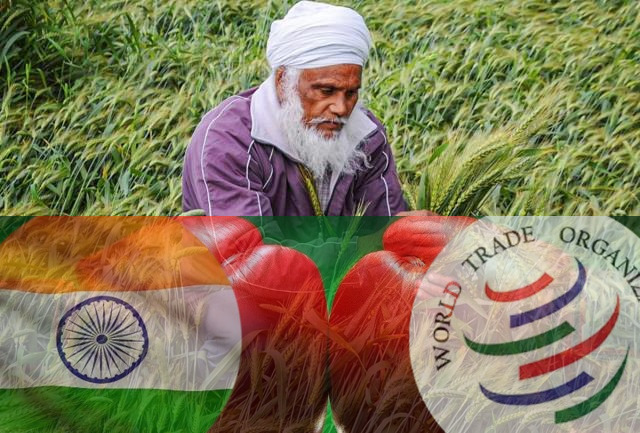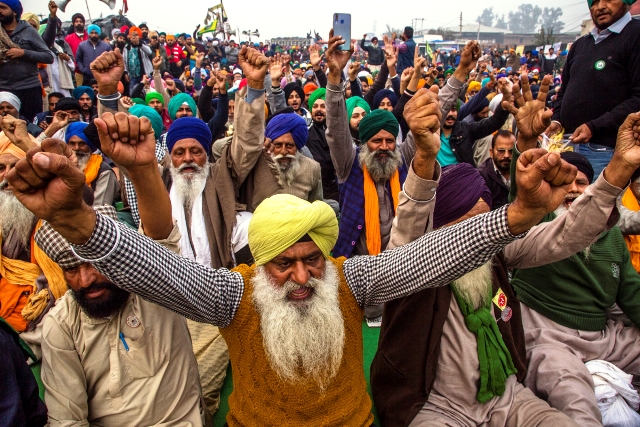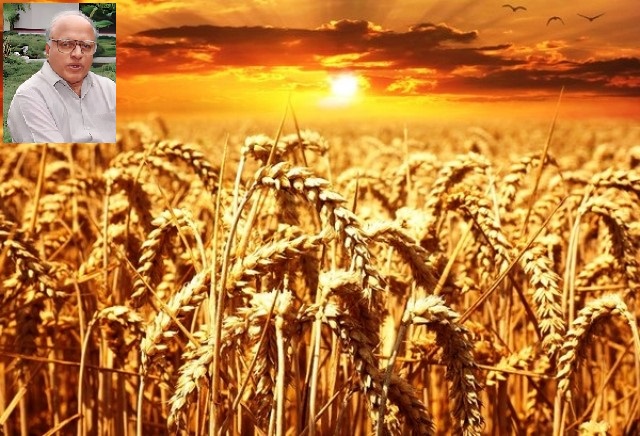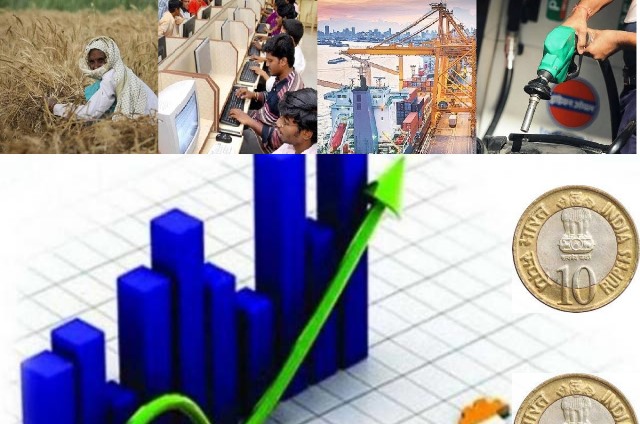However critically the developed nations view minimum support price, its sanctity for India cannot be overemphasised. Farmers in this country with an average holding of 1.08 hectares have hardly any leverage in the market, especially in times of bountiful production. They become desperate for government stepping in to buy farm products when their prices are dangerously close to MSP, with lurking fear of its breach. Threat of agri product prices coming under pressure is a distinct possibility in the current crop year (July to June) in the wake of more than normal precipitation of rains during the southwest monsoon (June to September).
Even though the monsoon took time to gain in pace raising concern in the government and the public because food items have remained the sore point in inflation staying high, finally the rains received till September end were 8 per cent above normal. This is the southwest monsoon’s best performance since 2020. India has made steady progress in bringing more and more cultivable land under irrigation. More than half of over 142 million hectares of gross sown area has the benefit of irrigation. Still the fate of crops in vast tracts of land is decided by the behaviour of the monsoon.
Encouraging precipitation of rains, notwithstanding the east and northeast not faring as well as other parts of the country, has encouraged New Delhi to set foodgrains production target at 341 million tonnes. In case the target is achieved, the output to be 9 million tonnes ahead of the 2023-24 production will set a new record. Besides the nature’s bounty received through good rains, official intervention by way of announcing MSP well ahead of farmers deciding how much of their land holdings will be committed to particular crops has a bearing on production.
MSP comes as an assurance to farmers that they will be able to dispose of their crop at official mandis (Agricultural Produce Market Committee set up by state governments) at state recommended minimum price and, therefore, not be subject to exploitation by traders.
Expectedly, the Indian farm sector where small and marginal farmers are found in abundance will bristle at any suspected official move to dilute MSP or allowing the creation of a market parallel to APMC to accommodate traders and retailers. To be recalled here how under unrest fanning among the farmers and also some constituents of National Democratic Alliance, particularly Shiromani Akali Dal, turning critics of the three farm related Acts – Farmers’ Produce Trade and Commerce (Promotion and Facilitation) Act, Farmers’ (Empowerment and Protection) Agreement on Price Assurance and Farm Services Act and Essential Commodities (Amendment) Act – the BJP despite having a majority in the Lok Sabha had to drop all three.
The stand of RSS affiliate Bharatiya Kisan Sangh that “MSP must be part of the law. We aren’t against reforms. But farmers must get fair price at all times” came as an embarrassment for the government. Assurances of the prime minister and agriculture minister in parliament that the Acts (since scrapped) were not to dilute MSP nor weaken crop procurement by the government were not enough to placate farmers. They were concerned that the ushering in of a market parallel to APMC where anyone could be a buyer but without legal requirement of the transaction being linked to MSP could work to the disadvantage of small farmers in particular with little bargaining power in all seasons.
Admitted that APMC or the mandis have many flaws crying for reforms, they still stand as guarantee of government agencies such as Food Corporation of India and NAFED doing their purchases at MSP using mandis as centres of business transactions. Foodgrains are procured for public distribution and also to maintain buffer stock as a shield against shocks of crop setbacks. Farmers have their compulsions to be obsessed with MSP since they don’t want to be exploited by trade in the absence of the legal guarantee that all transactions will be at government mandated minimum price or more.
But as SBI chief economic adviser Soumyakanti Ghosh has said in a report, the MSP regime covers just about 6 per cent of the farm universe. Even then in the hypothetical case of the government mopping up all the MSP crops, then the exercise will cost the Exchequer an enormous Rs 13.5 trillion of 2023-24 GDP. In this context, what is also not to be lost sight of is India’s grain storage capacity falls way short of the requirement of one of the world’s leading farm economies. The result sadly is damage or deterioration in quality of wheat and rice left in the open.
ALSO READ: ‘Legalised MSP For Farmers Is Sabka Saath Sabka Vikas’
In the current crop year, while the official foodgrain production target is 341 million tonnes, the available storage capacity is less than 150 million tonnes. Every year at the height of Rabi and Kharif season procurement of wheat and rice, the country offers the pathetic sight of grain being left in the open with the silos and warehouses already overflowing. Though not a day too soon, the government has proposed creation of the world’s largest grain storage facility in the cooperative sector. At an investment of Rs1.25 lakh crore and involving 11 states, foodgrain storage capacity of 70 million tonnes should be ready for use in the next five years.
Whatever the shortcomings, the MSP entailing market intervention by official agencies has helped in sustaining the interest of farmers in growing crops leaving the country with export surpluses of wheat and rice. Like in the last Rabi season (the principal crop here is wheat), FCI procurement was 26.6 million tonnes of wheat against 26.2 million tonnes in the previous season and the direct beneficiaries of the operation were 2.2 million farmers. In the past one year, the centre buying of paddy and wheat yielded over Rs2.3 lakh crore to 12.9 million farmers and for the sake of transparency all payments were made directly to their bank accounts.
Welfare of farmers apart, MSP is an effective handle available to the government to incentivise growers to allocate more land to such crops where the country is import dependent, their local production being not enough to meet domestic demand. While recently announcing MSP for six Rabi crops, the government raised the minimum price for rapeseed and mustard by Rs300 per quintal and for lentil (masur) by Rs275 per quintal.
These MSP rises are much higher than what is recommended for wheat. The rationale for the government doing all this is to motivate farmers to grow more oilseeds and pulses so that imports could be reduced. It will not be a bad idea to rationalise the production of water guzzling rice and the released land could come for growing oilseeds, pulses and vegetables. Promotion of intercropping on a meaningful scale across the country will be highly value accretive for the farm sector as it will improve earnings of farmers.
For more details visit us: https://lokmarg.com/
